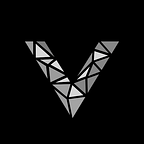Unfolding the Earth: Myriahedral Projections In WebGL
This article celebrates the tenth anniversary (2008–2018) of Myriahedral Projections, a set of map projections created by Jarke van Wijk that provide a unique set of features: unlike other map projections, Myriahedral Projections have no area or angle distortion. This is made possible by combining techniques of origami with map projection. By providing multiple cuts on a spherical mesh, we’re able to unfold the earth with little to no distortion on the plane at the expense of many interrupts.
Cuts (red) and folds (blue) for a map projection
Let’s explore what happens when we chose a graticule-based mesh and provide cuts along parallels and meridians.
Graticule
A straightforward way to select a mesh is to create it following parallels and meridians. Jarke van Wijk also provides a weight function that generates cuts and folds on different latitudes and longitudes. In the following WebGL example, we chose to create a 5 degree graticule, and explore cuts that generate unfoldings similar to polyconic, conic and azimuthal projections.
Polyconic projection based of a 2 degree graticule
In this example, as Jarke van Wijk points out each strip is almost free of angular or area distortion, however, a large number of interrupts occur with varying widths. These gaps visualise, just like the Tissot indicatrix, the distortion that occurs when a non-interrupted map is used, and can be used to explain the basic problem of map projection.
Recursive Subdivision
For the graticular projections, thin strips of faces are attached to one single strip or face. To get a more balanced pattern in this section, we start with Platonic solids for the projection of the globe, and recursively subdivide the polygons of these solids assigning weights relative to each subdivision.
Cuts (red) and folds (blue) for icosahedron (top) and cube (bottom) subdivisions
Optimal Mapping on Platonic Solids
As an aside, let’s consider optimal mappings on platonic solids. The current work tries to provide a texture mapping on Platonic solids such that there are no cuts on continents. We consider an optimal map when cuts do not cross continents.
Solids and optimal mappings
For the tetrahedron a perfect, and for the other platonic solids an almost perfect, mapping is achieved. Except for the tetrahedron, the resulting layout of the continents is the same as the layout used by Fuller for his Dymaxion map.
Geography Aligned Meshes
In this section we explore further this idea by generating meshes such that continents are cut orthogonal to their boundaries. We first create a texture that provides a distance function to land masses. We then use a technique to create streamlines from this distance function, and then derive meshes with a topology that creates orthogonal edges to the coast.
Cuts happening on the coastline of the earth.
These provide unique cuts along the coastline, and centers of oceans.
If you’ve found this article interesting please read the full paper by Jarke van Wijk.
